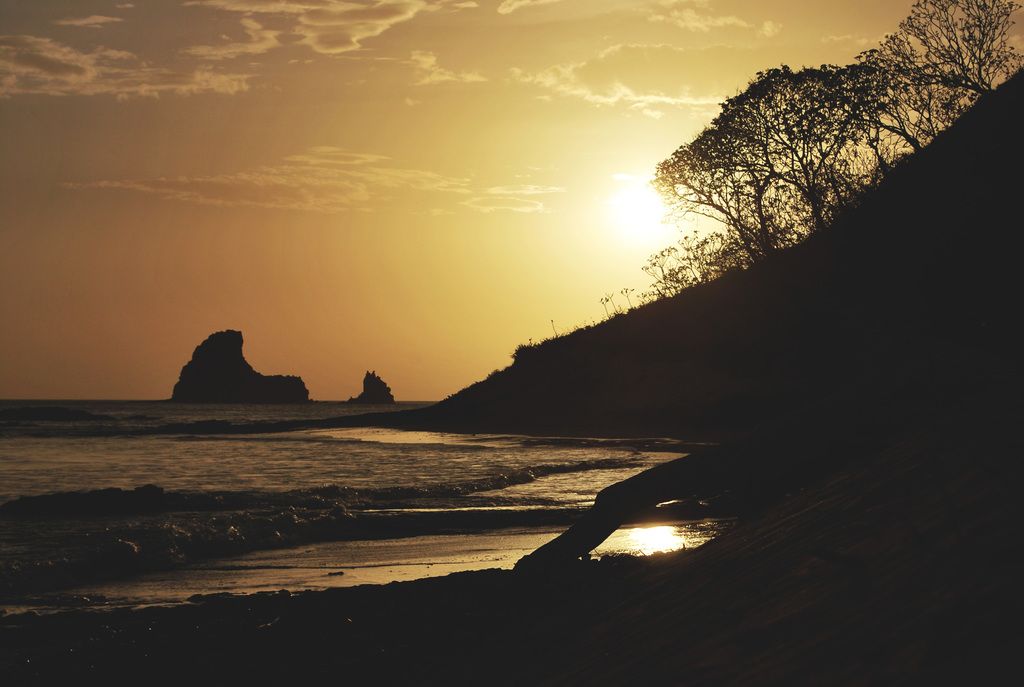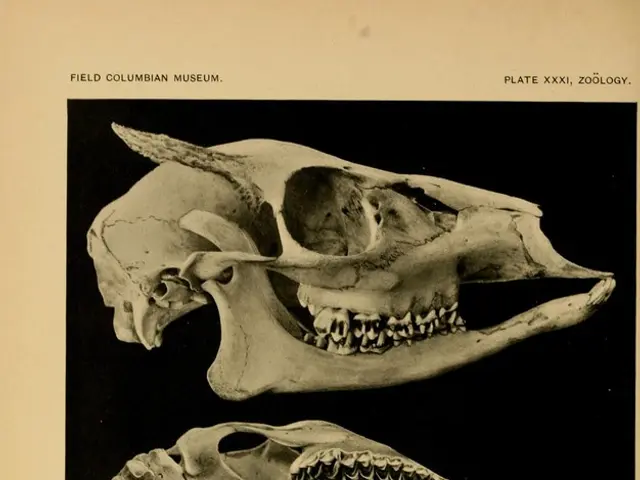Archaeological findings reveal prevalent use of psychedelic substances such as magic mushrooms and toad secretions in ancient American societies.
In the realm of antiquated civilizations, researchers are turning traditional wisdom on its head. Seems like it was our ancient comrades' state of mind, rather than their artifacts, that might just hold key secrets.
A new wave of research suggests that psychedelic compounds served as the lifeblood coursing through the cultural, spiritual, and medical veins of Mesoamerican societies.
From the mighty Maya to the Aztecs, these civilizations brewed their mysteries from mind-bending plants and mushrooms to foster dialogue with gods, heal the sick, and grasp the enigma life presented.
A study spearheaded by neurologist Francisco Javier Carod-Artal from Spain's Hospital Virgen de la Luz delivers an eye-opening vision of widespread usage of substances such as peyote, psilocybin mushrooms, and even enemas soaked in psychedelic concoctions in the centuries leading up to Columbus' arrival.
These practices were not simply a means of recreation; they were inextricably woven into religious rites and medical approaches.
For one, the Maya drank "Balché," a slightly psychoactive brew created from honey and bark extracts, during religious gatherings. Today, native communities in the region continue to use such substances to tackle conditions ranging from seizures to depression.
As Carod-Artal puts it, "Indigenous healers still play a crucial role in managing the health of rural communities with limited access to modern healthcare systems."
But why the fascination with psychedelics in Mesoamerican societies? And what can their ways suggest about the human psyche and spirit?
Thinkin' Beyond the Trip
At first glance, the planting of roots in psychedelic compounds might read like a desire to flee the hardships of life—a way to barrier-break.
Yet here's the kicker: these substances weren't merely about getting high.
They were catalysts for connection, healing, and understanding.
For the Maya, Aztecs, and other Mesoamerican civilizations, psychedelics were thresholds to the spiritual realm. They felt that tweaked consciousness could help them divine the messages of the gods, foresee the future, and traverse the trials of everyday life. Revelries involving substances like peyote and psilocybin mushrooms were often orchestrated amidst life's crossroads, such as harvests, illnesses, and wars.
As Carod-Artal's study reveals, such practices were infused deep within the fabric of Mesoamerican culture. Far from merely a fringe activity, the use of psychedelics was a mainstream phenomenon that imprinted their worldview.
A Closer Look at the Psychedelic Toolkit
The research explores several key substances and their uses:
- Balché: A slightly intoxicating beverage cooked up from honey and bark extracts, guzzled by the Maya during group ceremonies. The honey sourced from stingless bees that feasted on morning glory flowers, which harbor the psychedelic alkaloid ergine.
- Peyote: Utilized by the Olmec, Zapotec, Maya, and Aztec people, the peyote cactus is rich in mescaline, a compound that inspires vivid hallucinations and distorts perceptions of time and space. Ritual use of peyote dates back over 5,000 years.
- Psilocybin Mushrooms: Over 50 species of psilocybin-containing fungi were consumed in Mesoamerica. These mushrooms were believed to facilitate conversations with the divine and were used in healing rituals.
- Ritual Enemas: Alcohol and other psychedelics were squirted in via enemas to induce powerful trance-like states with lightning speed.
The Healing and Spiritual Influence
For ancient Mesoamericans, psychedelics were more than just vessels for spiritual connection—they were medical remedies.
Healers employed these substances to treat a variety of ailments, from physical afflictions to mental health issues.
Even today, indigenous communities in the region persist in applying these traditional treatments.
As Carod-Artal points out, "Many rural communities still rely on native healers for managing health conditions like seizures, migraines, and depression."
Surviving the Test of Time
The legacy of psychedelic practices in Mesoamerica endures to this day.
Traces of mescaline have even been found smoldering across modern-day Mexico and Texas, where indigenous communities continue to use peyote in spiritual and cultural rituals.
This resilient legacy underscores the potent connection between these substances and the cultural identity of Mesoamerican peoples.
It also raises crucial questions about the role of psychedelics in modern medicine and spirituality.
Harvesting the Wisdom of Antiquity
The study of psychedelic practices in ancient Mesoamerica offers valuable insights into the human experience.
It reminds us that altered states of consciousness have always been a vital component of our quest for meaning, healing, and connection.
As we continue to delve into the prospects of psychedelics in modern medicine, the knowledge of ancient civilizations can pave the way.
Their practices shed light on the notion that these compounds are not simply chemicals—they are tools for transformation.
Melding Past and Present
The utilization of psychedelics in Mesoamerica serves as a testament to the enduring human desire to peel back the curtain on the mysteries of the mind and soul.
These practices, rooted in both science and spirituality, offer a glimpse into a world where the boundaries between the physical and the metaphysical were fluid.
As we move forward, the lessons of the past remind us that the journey of self-discovery is as ancient as humanity itself—and that the tools we use to navigate it are as diverse as the cultures that have shaped our world.
Sources: LiveScience
Enrichment Data:
Overall:
Psychoactive substances played a significant role in the spiritual, medical, and cultural practices of ancient Mesoamerican societies. These substances, often referred to as entheogens, were used in various contexts to enhance spiritual experiences, facilitate healing, and reinforce social and cultural norms.
Spiritual Practices
- Connection with Deities: In Mesoamerican cultures, psychoactive substances like psilocybin mushrooms (commonly found in the region) and peyote were used in ceremonies to connect with divine beings and access spiritual realms. These substances were believed to bridge the gap between humans and gods, facilitating communication and spiritual insight.
- Sacred Ceremonies: The use of psychoactive substances was embedded in sacred rituals, emphasizing their transformative and revelatory potential. For example, the Maya and Aztecs incorporated these substances into elaborate ceremonies to achieve spiritual enlightenment and guide their religious practices.
Medical Practices
- Healing and Divination: Entheogens were also used for healing purposes. Shamans and spiritual leaders would ingest these substances to diagnose illnesses, communicate with spirits for guidance, and perform rituals aimed at healing the sick.
- Shamanic Practices: In many Mesoamerican cultures, shamans used psychoactive substances to enter trance states, allowing them to access mystical realms where they could retrieve knowledge, predict future events, or communicate with ancestral spirits to guide their communities.
Cultural Significance
- Social and Political Power: The use of psychoactive substances was not only for personal spiritual or healing purposes but also served to reinforce the social and political power of leaders. By controlling access to these substances and the knowledge associated with them, leaders could maintain their authority and influence over their communities.
- Cultural Identity and Tradition: The incorporation of psychoactive substances into cultural practices helped define the spiritual and cultural identity of Mesoamerican societies. These substances were integral to traditional rituals and ceremonies, passed down through generations, and were often revered as sacred tools for spiritual growth and community cohesion.
Specific Substances Used
- Psilocybin Mushrooms: These were widely used in Mesoamerica for spiritual and ritual purposes.
- Peyote: Used in some northern Mesoamerican and North American cultures for spiritual and healing purposes.
- Morning Glory Seeds (Ololiuhqui): Containing ergine, these seeds were used in shamanic rituals by indigenous groups like the Mazatec and Zapotec to communicate with deities.
- Science and health-and-wellness intersect in the ancient practice of using psychedelic compounds for spiritual and medical purposes, as revealed in a study spearheaded by neurologist Francisco Javier Carod-Artal.
- Environmental-science is not the only realm where researchers delve into the past for answers; the use of psychedelic therapies-and-treatments like peyote, psilocybin mushrooms, and Ololiuhqui can guide modern approaches in dealing with mental-health issues, as demonstrated by the resilient legacy of their use in indigenous communities.
- Space-and-astronomy may have been the last frontier for humanity's exploration, but the study of psychedelic practices in ancient Mesoamerican societies sheds light on the fluid boundaries between the physical and metaphysical realms, hinting at the potential for such substances to unlock deeper understanding of both the inner self and our cosmic origins.








